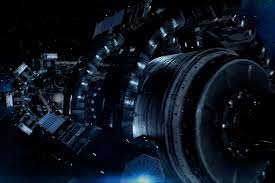
Breaking News
 CDC to end animal testing in groundbreaking decision that will impact hundreds of experiments
CDC to end animal testing in groundbreaking decision that will impact hundreds of experiments
 Once-thriving shopping mall in ailing Democrat-run city is eerily empty on last Sunday before...
Once-thriving shopping mall in ailing Democrat-run city is eerily empty on last Sunday before...
 One-of-a-kind trimaran is set to be pedaled around the world
One-of-a-kind trimaran is set to be pedaled around the world
 Israel Expands Territory With 19 New Settlements In West Bank
Israel Expands Territory With 19 New Settlements In West Bank
Top Tech News
 Perfect Aircrete, Kitchen Ingredients.
Perfect Aircrete, Kitchen Ingredients.
 Futuristic pixel-raising display lets you feel what's onscreen
Futuristic pixel-raising display lets you feel what's onscreen
 Cutting-Edge Facility Generates Pure Water and Hydrogen Fuel from Seawater for Mere Pennies
Cutting-Edge Facility Generates Pure Water and Hydrogen Fuel from Seawater for Mere Pennies
 This tiny dev board is packed with features for ambitious makers
This tiny dev board is packed with features for ambitious makers
 Scientists Discover Gel to Regrow Tooth Enamel
Scientists Discover Gel to Regrow Tooth Enamel
 Vitamin C and Dandelion Root Killing Cancer Cells -- as Former CDC Director Calls for COVID-19...
Vitamin C and Dandelion Root Killing Cancer Cells -- as Former CDC Director Calls for COVID-19...
 Galactic Brain: US firm plans space-based data centers, power grid to challenge China
Galactic Brain: US firm plans space-based data centers, power grid to challenge China
 A microbial cleanup for glyphosate just earned a patent. Here's why that matters
A microbial cleanup for glyphosate just earned a patent. Here's why that matters
 Japan Breaks Internet Speed Record with 5 Million Times Faster Data Transfer
Japan Breaks Internet Speed Record with 5 Million Times Faster Data Transfer
NASA and DARPA will Demo a Nuclear Thermal Rocket Engine in Space by 2027

DRACO's proposed solid core nuclear thermal rocket temperatures could reach almost 5000 degrees fahrenheit, which will need new advanced materials. It will use high-assay low-enriched uranium (HALEU) fuel, rather than highly-enriched uranium, "to have fewer logistical hurdles on its ambitious timeframe". Highly enriched uranium has many restrictions to prevent diversion to make nuclear weapons.
The plan is to engineer the system so the engine's fission reaction will only turn on once it is in space. The goal is to test the nuclear thermal rocket engine enabled spacecraft in Earth orbit during 2027.
Nuclear thermal rocket could speed travel in space by about 2 to 5 times and reduce travel time. DARPA says that the nuclear thermal rocket offers a thrust-to-weight ratio 10,000 times greater than electric propulsion and two to five times greater efficiency than in-space chemical propulsion.

 Advanced Propulsion Resources Part 1 of 2
Advanced Propulsion Resources Part 1 of 2

